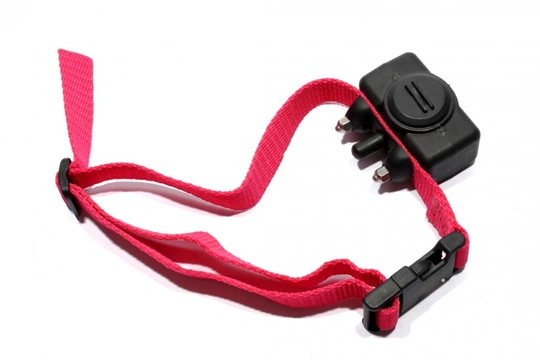
Government announces a consultation on the ban of electric shock collars for pets
Electric shock collars are marketed as a training device for dogs (and to a lesser extent, cats) and are readily available to buy online and in some pet shops. Collars of this type – which can be triggered by a handheld device or designed to deliver a shock automatically if the dog barks – have long been controversial worldwide, and they are already banned in Wales.
After a long-term campaign by The Dogs Trust and other animal welfare organisations, the government announced on the 12th March 2018 that they are launching a consultation on banning the use of electric shock collars for dogs and cats in England too, and Scotland is also considering banning devices of this type.
In this article, we will look at the use of electric shock collars for dogs in more detail, explain why they are both cruel and ineffective, and tell you how you can have your say in the government’s consultation, which closes on the 27th April 2018. Read on to learn more.
What are electric shock collars?
Electric shock collars are usually marketed for use on dogs, although they are also sold for cats as well. They consist of a fabric collar with a small box attached to the front of it, which contains the unit’s power source and working parts.
Electric shock collars come in two variants – one of which has the shock triggered remotely by the dog’s handler, using a handheld device that communicates with the collar itself to deliver a shock.
The other variant is supposed to automatically delivers a shock when the dog in question barks.
What are electric shock collars for dogs supposed to do?
Electric shock collars are marketed as a training device for dogs, which are supposed to help with correcting undesirable behaviours and problems in dogs – such as barking too much. The collars that can be triggered manually can be used to provide negative feedback to the dog whenever their handler triggers the device, and so how they are applied in practice depends on the handler themselves.
Manually triggered devices may also be used to provide negative feedback for barking, or to try to stop the dog doing something that they shouldn’t – such as digging, chewing, or scavenging.
Are they effective?
Dog owners who use electric shock collars on their dogs regularly would probably argue that they are effective – but ultimately, the evidence does not support this. Using pain or discomfort to provide feedback to a dog for their actions is known as negative reinforcement – and up until a few decades ago, this was generally the most widely used method of training dogs in the UK.
However, providing negative feedback as punishment rather than positive feedback as a reward is much less effective when it comes to training a happy, confident dog that works hard to please, and instead, is likely to result in a fearful, confused dog whose natural responses and behaviours are greatly limited.
Today, all responsible, experienced dog trainers use a form of positive reinforcement dog training – not only because this is more rewarding for both dog and owner, but because it is more effective too when it comes to teaching skills and curbing unwanted behaviours.
Are they safe?
Electric shock collars are designed to cause the dog pain when they are activated – even though this pain is designed to be brief and not extreme. However, using electric shock collars on your dog is not without risks, and overuse of the collar, a shock that is too strong, or a collar used on a very small dog can potentially cause physical harm as well as emotional distress.
They are also apt to make the dog fearful of their collar, which has further implications for the dog’s training and management that remain long after use of a shock collar is discontinued.
Are they humane?
The core of the debate over the use of electric shock collars for dogs is based on this very question – are electric shock collars humane? Using a shock collar deliberately causes pain and distress to the animal in question, which in most people’s books, is the very definition of inhumane – and also why there are such strong objections to the use of collars of this type.
After all, it is not considered to be acceptable to beat or physically hurt a dog in other ways, and simply because the pain involved in this instance is packaged up under the heading of a training aid does not negate the impact that is has on the dog in question.
How you can have your say
The government has just taken its first step to outlawing electric shock collars in England, by opening a public consultation into their usage. This is the beginning of the process required to introduce a new law or change an existing law in the UK – and it gives the general public their chance to weigh in and have their say on the matter.
As mentioned, electric shock collars for dogs are already banned in Wales, and Scotland too is taking steps to ban collars of this type – but in England, we’re not quite there yet.
The opinions of the public will be factored into the government’s ultimate decision – and you only have a limited amount of time to register your views and make your opinion count.
You can find out more about the consultation itself here, and register your opinions via the formal DEFRA consultation portal.
Remember, the consultation closes on the 27th April 2018, so you only have a short window of opportunity to make your views count – and help to outlaw the use of electric shock collars for pets in England.



